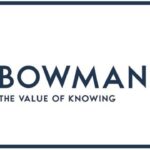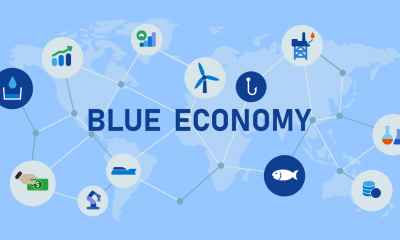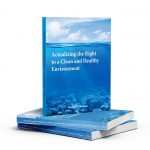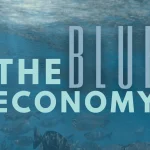By Hon. Prof. Kariuki Muigua, OGW, PhD, C.Arb, FCIArb is a Professor of Environmental Law and Dispute Resolution at the University of Nairobi, Member of Permanent Court of Arbitration, Leading Environmental Law Scholar, Respected Sustainable Development Policy Advisor, Top Natural Resources Lawyer, Highly-Regarded Dispute Resolution Expert and Awardee of the Order of Grand Warrior (OGW) of Kenya by H.E. the President of Republic of Kenya. He is the Academic Champion of ADR 2024, the African ADR Practitioner of the Year 2022, the African Arbitrator of the Year 2022, ADR Practitioner of the Year in Kenya 2021, CIArb (Kenya) Lifetime Achievement Award 2021 and ADR Publisher of the Year 2021 and Author of the Kenya’s First ESG Book: Embracing Environmental Social and Governance (ESG) tenets for Sustainable Development” (Glenwood, Nairobi, July 2023) and Kenya’s First Two Climate Change Law Book: Combating Climate Change for Sustainability (Glenwood, Nairobi, October 2023), Achieving Climate Justice for Development (Glenwood, Nairobi, October 2023) and Promoting Rule of Law for Sustainable Development (Glenwood, Nairobi, January 2024)*
Environment, Social and Governance (ESG) has emerged as arguably the most important tool of corporate governance in the current era. It acknowledges the environmental, social and governance concerns faced by corporations and seeks to integrate these concerns in corporate decision making in order to promote sustainable, responsible and ethical investments. There is need for organizations to continue embracing ESG in order to promote corporate sustainability. Embracing ESG as a pillar of sustainable development is an ideal whose time has come.
There are various ESG reporting frameworks applicable in Kenya. These include the Capital Markets Authority, the Nairobi Stock Exchange ESG Reporting Framework, the United Nations Global Compact, various investment groups, the Carbon Disclosure Programme (CDP) and industry level reporting requirements like those imposed by the Central Bank of Kenya touching on the operations of licensed Banks. The basics of each of these ESG reporting requirements and how listed companies in Kenya comply with them is discussed here below: –
Nairobi Securities Exchange ESG Reporting
The Nairobi Securities Exchange has developed an ESG Disclosure Manual to guide listed companies in Kenya on ESG reporting. The Manual (ESG Manual) provides that ESG reporting should be on a materiality basis. In financial reporting, materiality is the threshold for influencing the economic decisions of those using an Organisation’s financial statements. A similar concept is also important in ESG reporting. In ESG reporting, “materiality is the principle that determines which relevant topics are sufficiently important that it is essential to report on them.” It is necessary to undertake materiality analysis because not all ESG topics are of equal importance to an organization and an ESG report has to reflect their relative priority of the various topics. The ESG Manual proposes mandatory ESG disclosures for NSE listed companies to help achieve comparability and to facilitate compliance with the CMA Code, relevant international treaties, ESG standards and local regulations
The Capital Markets Authority ESG Requirements
The Capital Markets Authority (CMA) published the Code of Corporate Governance Practices for Issuers of Securities to the Public in 2015. It requires listed companies to explain in their annual reports how they have applied the recommendations contained in the Code. Within the Code, the CMA also provides examples of topics that the Boards of listed companies should treat as material. The ESG Manual gives guidelines on how the ESG reporting approach suggested in it can be used to meet the reporting requirements of the CMA code.
These include by identifying the CMA as a key stakeholder for listed companies within the situational analysis and stakeholder engagement phases. Second, it involves analysing the CMA’s expectations of the organisation and the reporting requirements contained in the CMA Code. Third, complying with the CMA code under the ESG Manual means including disclosures requirements on the Code as part of the assessed material ESG topics for disclosure. These have been proposed as a mandatory disclosure topic for all listed companies, that is, governance under general disclosure topics.
In addition, it takes generating content on the organisation’s performance around these topics using the guide proposed in this manual and reference to the GRI Standards on governance disclosures. It also entails submitting extracts or the full ESG report discussing performance on these indicators to the CMA within the agreed timelines with the CMA. In this case, the ESG report should be published within the reporting timelines required for CMA submissions.
Applicable Investor Groups ESG Reporting Requirements
As a way of managing assessed environmental and social risk in debt and equity investments, some institutional investors typically require the implementation of an environmental and social management system. Thus, depending on the assessed risk profile, beneficiary organisations are required to report at least annually on performance on several pre-identified environmental and social performance metrics. Through such reporting process, investors should be able to develop content around the organisation’s approach to these topics and demonstrate performance during the reporting period.
It is noteworthy that environmental and social risk management is one of the mandatory ESG topics proposed for all listed companies. The International Finance Corporation (IFC) Performance Standards on Environmental and Social Sustainability is one example of ESG indicators and metrics that investors commonly refer to when evaluating investments.
United Nations Global Compact
There are more than 200 Organisations in Kenya, including some listed companies, that are participants of the Global Compact Network Kenya, the local arm of the United Nations Global Compact (UNGC). The UNGC has developed a set of 10 principles that organisations can voluntarily adopt and integrate into their own strategies and operations. These principles cover four issue areas including Human Rights, Labour, Environment and Anticorruption. In turn, the Ten Principles of the United Nations Global Compact is a key guideline in that regard.
The UNGC encourages participants to self-assess, prepare, and submit a Communication on Progress report to the UNGC on their performance around these four topical areas. According to the UNGC, the Communication on Progress report should be fully integrated into a company’s main stakeholder communications, most often the annual or sustainability report.
By developing an annual ESG report discussing organisational performance around these topics, listed companies can submit an extract of the ESG report to fulfil the requirements of the annual Communication on Progress report submissions to the UNGC. Further, applying the Global Reporting Initiative standards ensures compliance to the Communication on Progress reporting requirements. Organisations can also refer to the UNGC guidance document on Using GRI’s Guidelines to Create a CoP.
The Carbon Disclosure Project (CDP)
The CDP is a non-profit charity helps in promoting transparency in environmental reporting by cities and companies around the world. Signatory companies provide performance data on climate change, water security and deforestation on a self-disclosure basis. This self-reported data is then used by investors and other stakeholders to make informed data driven decisions with regards to the reporting company’s environmental impacts. For example, investors can use data in the CDP database to calculate the carbon intensity of their portfolio.
Investors can also select entities that demonstrate climate resilience by evidenced implementation of strategies that future proof their organisations against climate related polices and regulations. There is need to consider that the CDP and GRI use common metrics on reporting on carbon emissions. ESG reporting can be used to collect and report data to the CDP. Organisations can select any or all the disclosure topics as part of their materiality assessment exercise and build reporting content within the ESG report that meets the CDP self-disclosure requirements.
Industry level ESG Reporting
Certain industry groups in Kenya have developed voluntary ESG related guidelines for consideration by member organisations. For example, in the banking sector in Kenya, the Kenya Bankers Association, the trade association for banks in Kenya, has developed the Sustainable Finance Initiative (SFI) industry principles for the banking sector. Further, recently the Central Bank of Kenya (CBK) has developed Guidance on Climate Related Risk Management for the banking sector. The aim of the Guidance is to sensitize the banking sector on mitigation of climate-related risks and harnessing of opportunities. It also offers guidance on the development and implementation of appropriate climate-related strategies and policies.
Given the current trajectory of ESG and emphasis placed by investors on ESG integration, it is expected that more trade associations and industry groupings in Kenya will develop specific ESG guidelines for adoption by their members. Industry guidelines provide relevant insights on ESG issues impacting the industry and listed companies can refer to such guidelines when identifying material ESG topics for disclosure using the framework proposed in this manual.
This is an extract from Kenya’s First ESG Law Book: Embracing Environmental Social and Governance (ESG) tenets for Sustainable Development” (Glenwood, Nairobi, July 2023) by Hon. Prof. Kariuki Muigua, OGW, PhD, Professor of Environmental Law and Dispute Resolution, Senior Advocate of Kenya, Chartered Arbitrator, Kenya’s ADR Practitioner of the Year 2021 (Nairobi Legal Awards), ADR Lifetime Achievement Award 2021 (CIArb Kenya), African Arbitrator of the Year 2022, Africa ADR Practitioner of the Year 2022, Member of National Environment Tribunal (NET) Emeritus (2017 to 2023) and Member of Permanent Court of Arbitration nominated by Republic of Kenya and Academic Champion of ADR 2024. Prof. Kariuki Muigua is a foremost Environmental Law and Natural Resources Lawyer and Scholar, Sustainable Development Advocate and Conflict Management Expert in Kenya. Prof. Kariuki Muigua teaches Environmental Law and Dispute resolution at the University of Nairobi School of Law, The Center for Advanced Studies in Environmental Law and Policy (CASELAP) and Wangari Maathai Institute for Peace and Environmental Studies. He has published numerous books and articles on Environmental Law, Environmental Justice Conflict Management, Alternative Dispute Resolution and Sustainable Development. Prof. Muigua is also a Chartered Arbitrator, an Accredited Mediator, the Managing Partner of Kariuki Muigua & Co. Advocates and Africa Trustee Emeritus of the Chartered Institute of Arbitrators 2019-2022. Prof. Muigua is a 2023 recipient of President of the Republic of Kenya Order of Grand Warrior (OGW) Award for his service to the Nation as a Distinguished Expert, Academic and Scholar in Dispute Resolution and recognized among the top 5 leading lawyers and dispute resolution experts in Band 1 in Kenya by the Chambers Global Guide 2024 and was listed in the Inaugural THE LAWYER AFRICA Litigation Hall of Fame 2023 as one of the Top 50 Most Distinguished Litigation Lawyers in Kenya and the Top Arbitrator in Kenya in 2023.
References
Adams, C.A., Alhamood, A., He, X., Tian, J., Wang, L. and Wang, Y. (2021) The Double-Materiality Concept: Application and Issues, published by the Global Reporting Initiative (GRI) as a White Paper, Available at: https://www.globalreporting.org/media/jrbntbyv/griwhitepaper-publications.pdf (accessed on 21/07/2022)
Capital Markets Authority., Code of Corporate Governance Practices for Issuers of Securities to the Public in 2015, Legal Notice No. 1420.
Cedric.R., ‘Accountability of Multinational Corporations for Human Rights Abuses.” Utrecht Law Review 14.2 (2018): 1-5.’
CFI, ESG (Environmental, Social and Governance), Available at: https://corporatefinanceinstitute.com/resources/knowledge/other/esg-environmental-socialgovernance/ (accessed on 21/07/2022).
Create Research, “Passive Investing 2021: Rise of the social pillar of ESG,” Available at: https://cdn.efundresearch.com/files/RcfPdrQdAaVI9tiBgrgLq4baO7Wciz6eepZTODEO.pdf (accessed on 21/07/2022).
De Francesco. A.J., ‘The impact of sustainability on the investment environment.’ Journal of European Real Estate Research (2008).
Erkens. D.H, et al Corporate governance in the 2007–2008 financial crisis: Evidence from financial institutions worldwide.” Journal of corporate finance 18.2 (2012): 389-411.
European Commission ‘Guidelines on Non-Financial Reporting’, available at https://ec.europa.eu/info/publications/non-financial-reporting-guidelines_en (accessed on 21/07/2022).
Fonseca.A et al., ‘Sustainability reporting among mining corporations: a constructive critique of the GRI approach.” Journal of cleaner production 84 (2014): 70- 83.’
Global Reporting Initiative., ‘ESG Standards, Frameworks and Everything in Between’ available at https://www.globalreporting.org/media/jxkgrggd/gri-perspective-esgstandards-frameworks.pdf (accessed on 21/07/2022).
GRI., ‘The Global Standards for Sustainability Reporting’ available at https://www.globalreporting.org/standards/ (accessed on 21/07/2022).
Mariarosaria. S & Scarpato. D ‘Sustainable Consumption: How Does Social Media Affect Food Choices?’ Journal of Cleaner Production 277 (2020): 124036.
Martin.C et al., ‘Corporate governance and the 2008–09 Financial Crisis.” Corporate Governance: An International Review 19.5 (2011): 399-404.
Muigua. K., ‘What are the Material Issues for ESG Reporting in Kenya?’ available at https://thelawyer.africa/2022/06/05/material-issues-for-esg-reporting-in-kenya/ (accessed on 21/07/2022).
Muigua.K., ‘Introduction to ESG (Environmental, Social and Governance) available at https://thelawyer.africa/2022/02/04/esg-environmental-social-and-governance/ (accessed on 22/07/2022).
Nairobi Securities Exchange, ‘ESG Disclosures Guidance Manual’, available at https://sseinitiative.org/wp-content/uploads/2021/12/NSE-ESG-Disclosures-Guidance.pdf (accessed on 21/07/2022).
Norton Rose Fulbright, “Environmental, Social and Governance,” Available at: https://www.nortonrosefulbright.com/en/services/203f40d1/environmental-social-andgovernance-esg (accessed on 21/07/2022).
OECD (2021), ESG Investing and Climate Transition: Market Practices, Issues and Policy Considerations, OECD Paris, https://www.oecd.org/finance/ESG-investing-andclimatetransition-Market-practices-issues-and-policy-considerations.pdf (accessed on 21/07/2022).
OECD., ‘Environmental Social and Governance (ESG) Investing’ available at https://www.oecd.org/finance/esg-investing.htm (accessed on 21/07/2022).
Ojiambo, S., “Leadership of the UN Global Compact: Message of CEO and Executive Director,” Available at: https://www.unglobalcompact.org/about/governance/executive-director (accessed on 21/07/2022).
RL360, “Governance-The G in ESG,” Available at: https://www.rl360.com/row/funds/investment-definitions/g-in-esg.htm (accessed on 21/07/2022).
Ruth.J., ‘The Convergence of Financial and ESG Materiality: Taking Sustainability Mainstream.” American Business Law Journal 56.3 (2019): 645-702.’
Standard Chartered Singapore, “The S in ESG,” Available at: https://www.sc.com/sg/wealth/insights/the-s-in-esg/ (accessed on 21/07/2022).
Stuart. L.G et al., ‘Firms and social responsibility: A review of ESG and CSR research in corporate finance.’ Journal of Corporate Finance 66 (2021): 101889.
The Financial Times Lexicon, Available at: https://markets.ft.com/glossary/searchLetter.asp?letter=E (accessed on 21/07/2022).
United Nations, Department of Economic and Social Affairs, ‘Sustainable Development’ available at https://sdgs.un.org/goals (accessed on 21/07/2022).


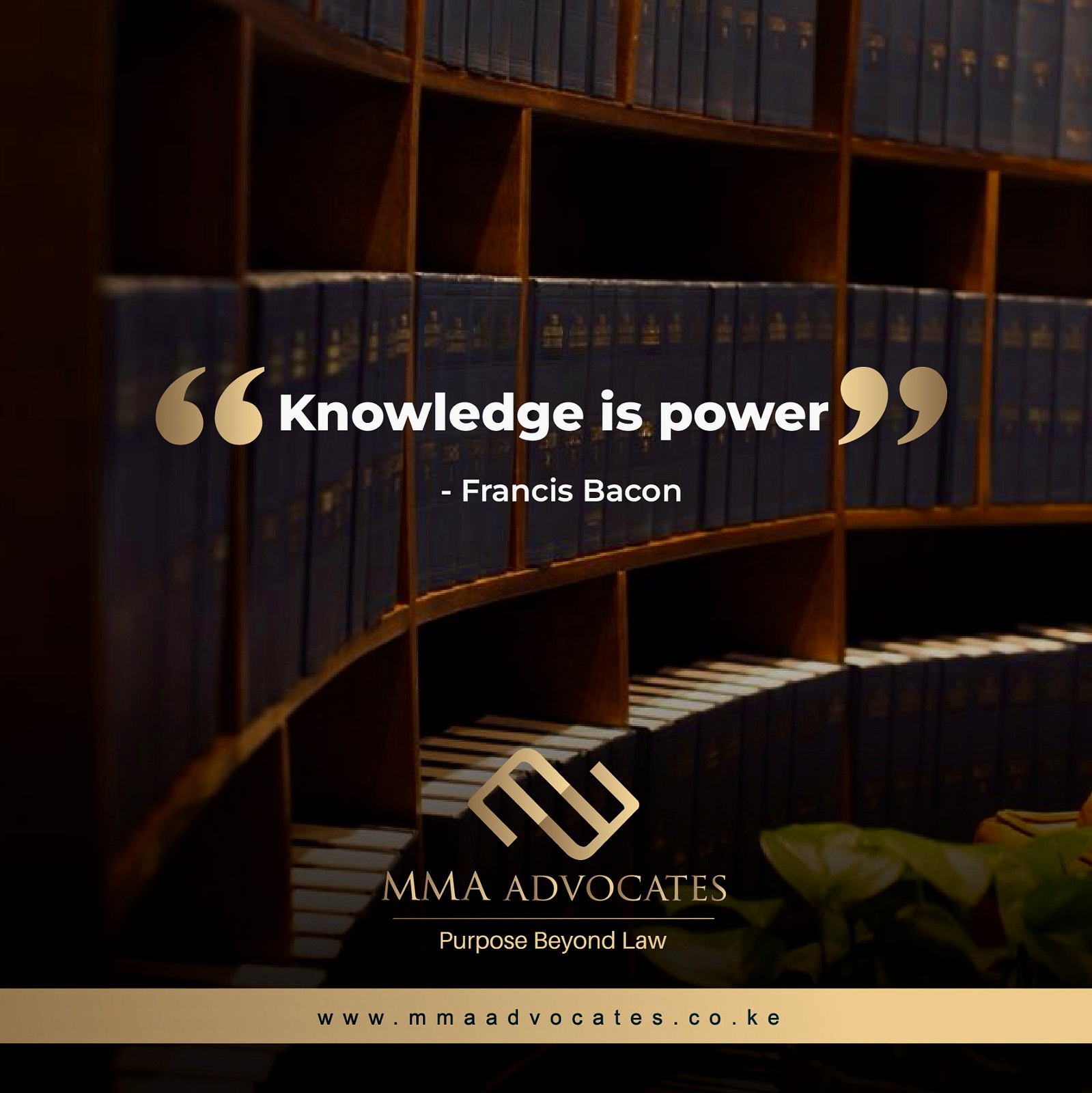


 Lawyers2 years ago
Lawyers2 years ago
 News & Analysis3 years ago
News & Analysis3 years ago
 News & Analysis3 years ago
News & Analysis3 years ago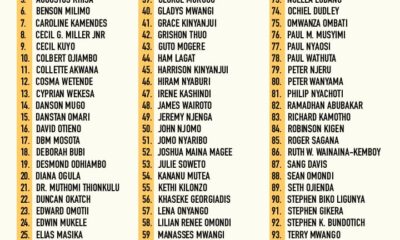
 Lawyers2 years ago
Lawyers2 years ago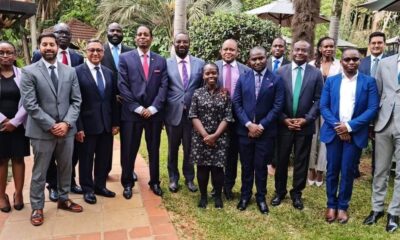
 News & Analysis3 years ago
News & Analysis3 years ago
 News & Analysis1 year ago
News & Analysis1 year ago
 News & Analysis3 years ago
News & Analysis3 years ago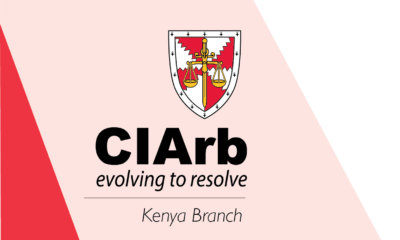
 News & Analysis1 year ago
News & Analysis1 year ago

